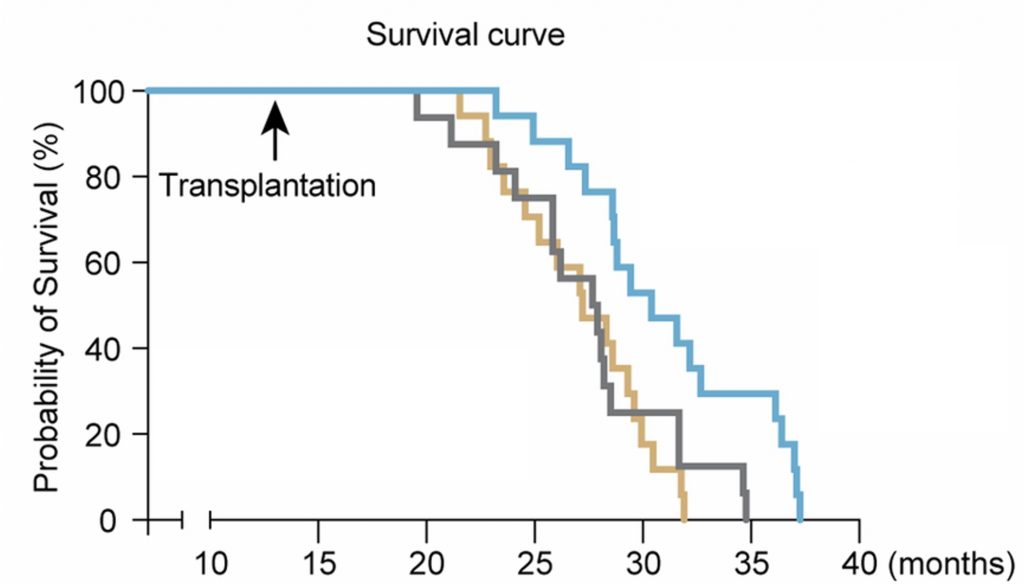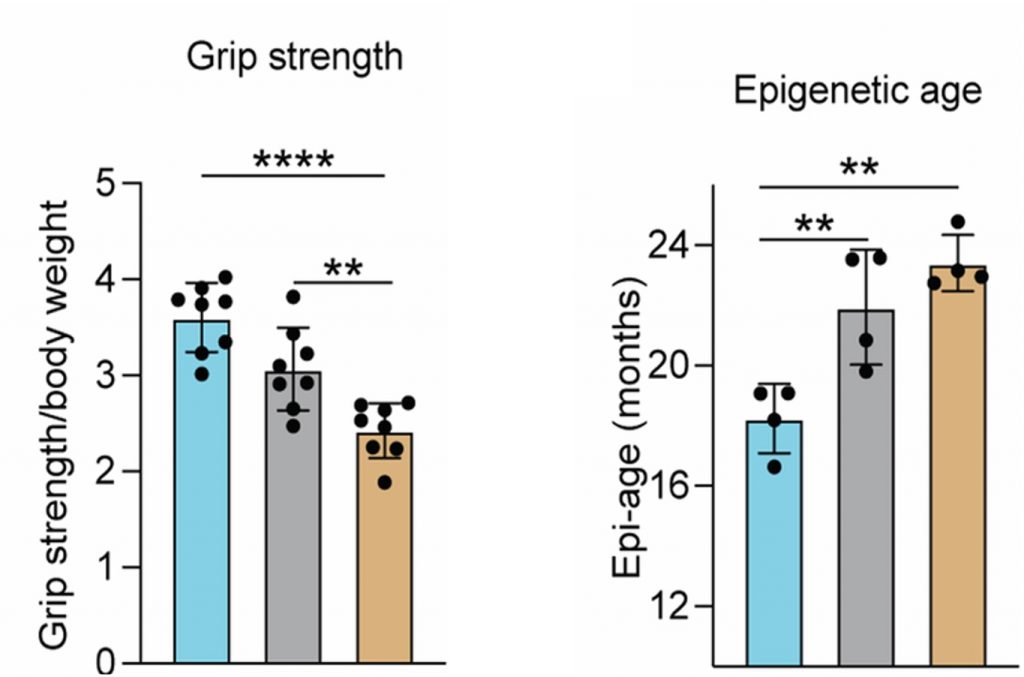Key Points:
- Old mice have a subset of “young” stem cells, which give rise to red blood cells and immune system cells.
- These “young” stem cells prolong the lifespan of middle-aged mice and delay aspects of aging such as weakness.
- Reducing old stem cells also delays aspects of aging.
Researchers from Boston Children’s Hospital and Harvard Medical School have found that transplanting a subset of “young” stem cells from old mice into middle-aged mice increases the lifespan of middle-aged mice by over 9%.

Furthermore, the “young” stem cells delayed multiple manifestations of aging by rejuvenating the immune system and improving physical performance, including strength, endurance, and balance. Additionally, “young” stem cell treatment reduced epigenetic age — a way of measuring biological aging at the molecular level. The findings reveal that “young” stem cell transplantation can delay aging if administered during middle age in mice.

What are “Young” Stem Cells?
The Boston-based researchers studied hematopoietic stem cells, which give rise to all our blood cells, including our red blood cells (the cells that carry oxygen) and white blood cells (the cells of our immune system). Previous studies have shown that removing hematopoietic stem cells from young mice and transplanting them into old mice makes the old mice younger. Remarkably, the reverse is true: removing hematopoietic stem cells from old mice and transplanting them into young mice makes young mice older.
However, because our immune system rejects foreign material, including stem cells, it would be impractical to attempt transferring hematopoietic stem cells from young adults to older adults in the clinic. When using stem cells in practice, it would be easier to use one’s own stem cells. Once removed from our body, stem cells can be grown in a laboratory dish and larger numbers can be reintroduced to the body.
The key finding of the Boston Children’s Hospital and Harvard Medical School researchers was that old mice not only have old hematopoietic stem cells but also a subset of hematopoietic stem cells that are more similar to hematopoietic stem cells from young mice. It’s these “young” stem cells that the researchers used to prolong the lifespan of old mice. Based on these findings, it would seem possible that “young” stem cells could be extracted from older patients and reintroduced into their bodies after being multiplied. This sort of therapy could potentially reverse biological aging.
Old Stem Cells Are the Problem: Removing Them, A Future Therapy?
In a 2005 study, researchers joined the circulatory systems of old mice to that of young mice. This caused the old mice to become younger and the young mice to become older. Since this touchstone study, scientists have searched for factors within young blood that may rejuvenate old organs, tissues, and cells. Now, the Boston researchers argue that they may have found which factors in old blood cause our bodies to age.
In addition to delaying aspects of aging by transplanting “young” stem cells into middle-aged mice, the researchers found that transplanting a reduced number of old stem cells into middle-aged mice also delays manifestations of aging, including physical performance decrements. For this reason, the authors say that a potential therapy could involve removing old hematopoietic stem cells from elderly patients. Such a therapy could potentially bypass the need to transfuse whole blood from younger individuals.